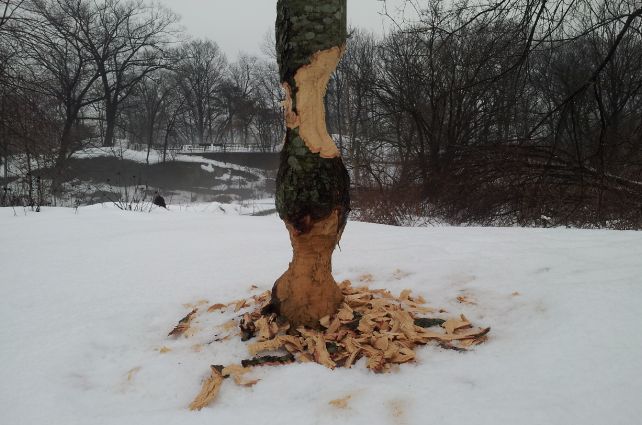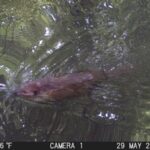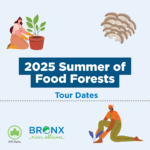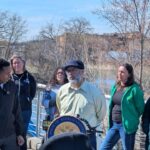We haven’t seen much activity from the Bronx River beavers this winter- until recently. Less than two weeks ago, our education director Damian Griffin noticed fresh gnaw marks on a tree near the Bronx Zoo. A beaver’s diet consists of leaves, bark, twigs, roots, and aquatic plants, but its main source of nutrition is the cambium layer, the growing part of the tree just under the outer bark. Our latest picture showcases their impressive work from Tuesday night as they labor to get the tree down to gain access to the upper branches. And check out this great footage of the beavers’ nocturnal work at the NYBG from last winter.
Jose, lovingly named after Bronx representative Jose Serrano for his commitment to ecological restoration of the river, was the first confirmed beaver in New York City in over 200 years. The city’s beaver population doubled when Jose was joined by Justin Beaver, a name chosen through an online poll. Their return has been covered by National Geographic, Audubon, the New York Times, and the Daily News, to name a few.
The beavers are a powerful symbol that the Bronx River is no longer the neglected and polluted waterway it once was considered. The work of the Bronx River Alliance and other community groups have made real accomplishments to reclaim and restore the river, converting it from a trash-strewn, weed-choked river into viable habitat for the wildlife that once thrived here. We believe Justin and Jose live in what is technically called the Bronx Park, which is comprised of the NY Botanical Garden, the Zoo, and the Bronx River Forest, although we have occassionally seen signs of beaver activity outside of these zones, down in the estuary and as far to the north as Nereid Avenue.






